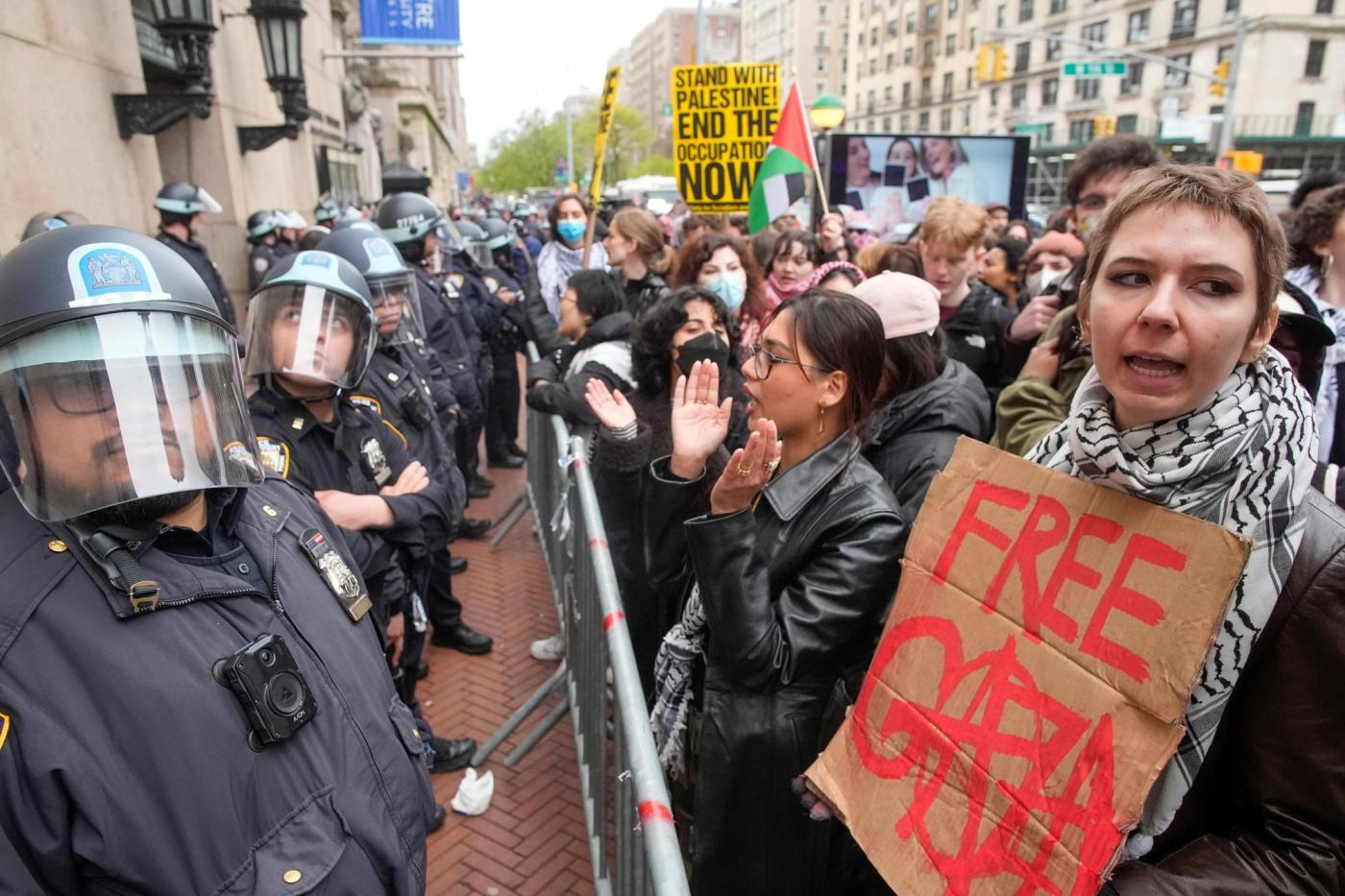
Stephen L. Carter: Will Columbia protesters achieve their goals?
I fear that the current round of campus protests is wearing out its welcome. This isn’t a conclusion I reach lightly. In my increasingly distant youth, I was a sometime protester myself, marching and chanting alongside classmates, and I tend to take vicarious pleasure in student activism. But in my day, we recognized the moment to stop. Whereas the current wave of protests, whatever their original motivations, have become not only disruptive but, for many Jewish students, frightening.
I’m a near-absolutist when it comes to free speech, but disruption is not a speech issue. I am not a fan of arresting students, but there’s a difference between the right to express an opinion and the right to occupy a plaza or chant loud enough to interfere with studying, or classroom instruction, or, for that matter, the simple freedom to go about the campus in peace.
I’m not saying that there’s never justification for being disruptive; I’m only saying that disruption isn’t speech. In traditional protest theory, a key reason for blocking streets and in other ways making everyday life difficult is precisely be arrested. The idea is that once a skeptical world sees that the courage of your convictions is sufficient to lead you to jail, some of the bystanders might cease standing by and become active supporters of the cause.
The problem is that too often, using such tactics has shifted the debate to the legitimacy of particular forms of protest. The underlying cause has gotten lost in a conversation about process. Process matters; but substance is what draws demonstrators into the streets.
One sees this evolution in the public conversation since universities have begun clearing away protest encampments. Suddenly, everybody wants to talk about when protest crosses the line between protected speech and unprotected conduct. But from the viewpoint of the committed protester, an argument over the limits of free speech is a distraction from the intended argument over the Gaza war.
In the old days — if I may call them such — the point of nonviolent protest was to change public opinion by provoking a reaction through which authority would show its true repressive face. This approach worked. It wasn’t the civil rights marches as such that aroused the conscience of a nation; what put an end to the South’s pretense of racial harmony was the ensuing fire hoses, police dogs, and murders. For those protests to be effective, it had to be the authorities, not the protesters, who engaged in intimidation.
The decisions at Columbia and Yale and elsewhere to arrest protesters and clear their encampments by force has led to demonstrations at other schools. This activism cascade supports the contagion theory used by many social scientists to explain how protests jump from place to place. Passive supporters of a cause become active supporters, and then signal their support by engaging in behavior similar to that of protesters elsewhere.
But the fact that demonstrations spread does not imply that activists will achieve their goals. So far, there’s little evidence that the Gaza protests or the efforts by universities to restore order are building support for the cause.
We shouldn’t be surprised. With rare exception, the effect of protest on public opinion is zero. This observation is hardly new. Back in the 1970s, the philosopher Richard B. Gregg, an advocate of nonviolence, mused on why campus antiwar protests met with so little success:
“Opportunities for dialogue become further limited as protestors, at moments of confrontation reduce their verbalization to slogans, epithets, and chants, and rely upon obscene gestures and sheer body force to make their point.”
Gregg, who agreed with the protesters, wondered why they went to all the trouble, given that their tactics were unlikely to change minds. The answer, he explained, was that through their actions, those of like mind seek to “constitute” themselves into a movement. Their speech and conduct, however unreasonable they seem to observers, are means by which they prove to each other who they are. In Gregg’s view, the protesters expect to fail, and are fine with that expectation. The point is not short-run success, but long-run solidarity. (Yes, the war ended; but no serious historian thinks the protests were the driving force.)
It’s fair to ask, of course, whether this classic analysis will stand up in a world altered by the internet and social media. And it’s worth noting that protests for racial justice have moved the needle on public opinion, even when violent — from the 1992 Rodney King riots to the 2020 Black Lives Matter protests.
The relatively undisciplined nature of the campus protests over Gaza suggests a genuine belief on the part of the protesters that if they keep at it, something will change. But what changes may not quite what they expect. If, as some observers think likely, demonstrators at some schools choose to disrupt commencement ceremonies, one suspects that opinion will turn sharply against them.
Don’t get me wrong. I believe in self-expression for its own sake, even when nobody’s mind is going to be changed; and I quite understand the heartfelt need at times to shout one’s agony to an uncaring world. But I also believe in the values that make the campus different from other institutions, and, in particular, the commitments to thoughtful colleagueship and reasoned dialogue. That’s why, on campus, the best place to argue remains the classroom.
————
This column does not necessarily reflect the opinion of the editorial board or Bloomberg LP and its owners.
Related Articles
Thomas Friedman: Israel has a choice: Rafah or Riyadh
Bruce Yandle: Halt, they cried! But the inflation tide continues
Lisa Jarvis: Idaho’s abortion ban is based on legal delusion and medical myth
Jamelle Bouie: Is the president above the law? The answer is no.
Stephen L. Carter: Should Donald Trump’s jury really remain anonymous?


